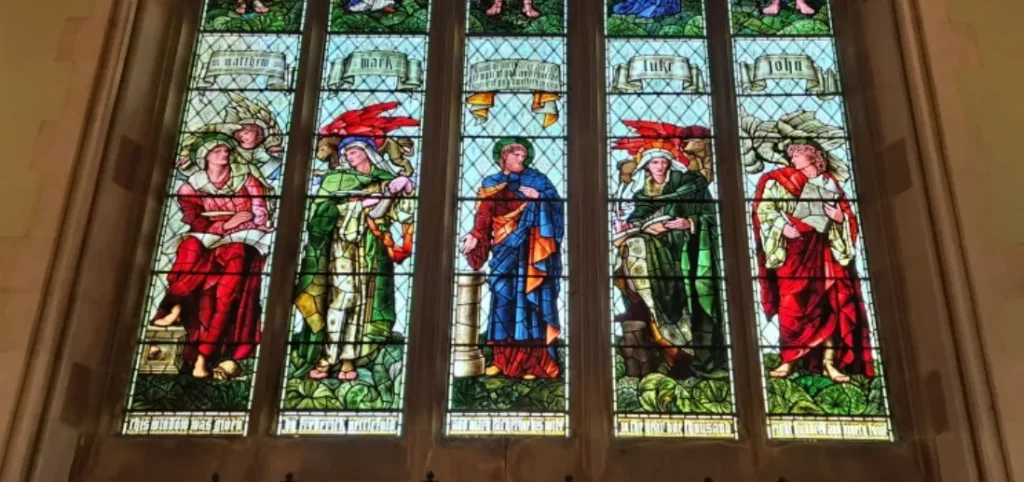This is the first post of several about a trip I recently made to Oxford, England. For some reason I’d never visited Oxford before, despite the fact that my mum and dad, and one of my uncles, studied there (my mum studied fine art).
I had to make a trip back to the UK this August, with a reason to be in Oxford, so I scheduled in a couple of extra days to be a tourist. (I miss the depth of history you find in Europe so I like to try to indulge in as much of it as possible when I’m visiting.)
Oxford itself was quite amazing. While I knew about the general history of the university, I hadn’t fully grasped how old the whole centre of the city is, or the extent to which real history seems to be around every corner. I ended wishing I’d done a little more research beforehand to really be able to appreciate the places I was visiting.

As well as the history, I suspected there might be some things to see as an “art tourist”. Since first being introduced to their work in high school, I have loved the Pre-Raphaelite painters. Their blend of incredible realism with mythical subject matter ticked all the boxes for me, and still does. Over the years I have travelled to various galleries to try to see as much as I can in person, and when I knew I was going to Oxford I did some research to see what Pre-Raphaelite work there might be for me to see there.
I wasn’t disappointed!
Harris Manchester College
As often happens, there were 2 categories of work to find. There were paintings in galleries, and then there was work that was incorporated into buildings (murals and stained glass). I was lucky to have an offer from a member of staff at Harris Manchester College to show me some stained glass by Burne-Jones and William Morris in their chapel, that most people don’t know is there (the college is a smaller one, and a little off the beaten path).

Considering these are “tucked away”, I was blown away. They are beautiful! The Burne-Jones design is clear from the folds of the fabric, and even more so from the style of the faces. And the Morris influence was obvious in all the botanical details.


My guide told me that the chapel was intended to be more “non-denominational” than other college chapels, and so the windows represented more general positive traits, including inspiration, justice, generosity and courage, rather than only religious themes (though those are certainly present too). Each window was sponsored by a benefactor, who chose the style of the figure and the virtue represented.
Christ Church
Christ Church College is one of the oldest and largest in Oxford, and it’s buildings were stunning. Rather than a chapel this college has a cathedral which dates back to the 1500s, with a priory on the site as far back as the 12th century. It has a lot of beautiful stained glass, including sections designed by Burne-Jones. Again, his style is obvious and the windows wonderful.
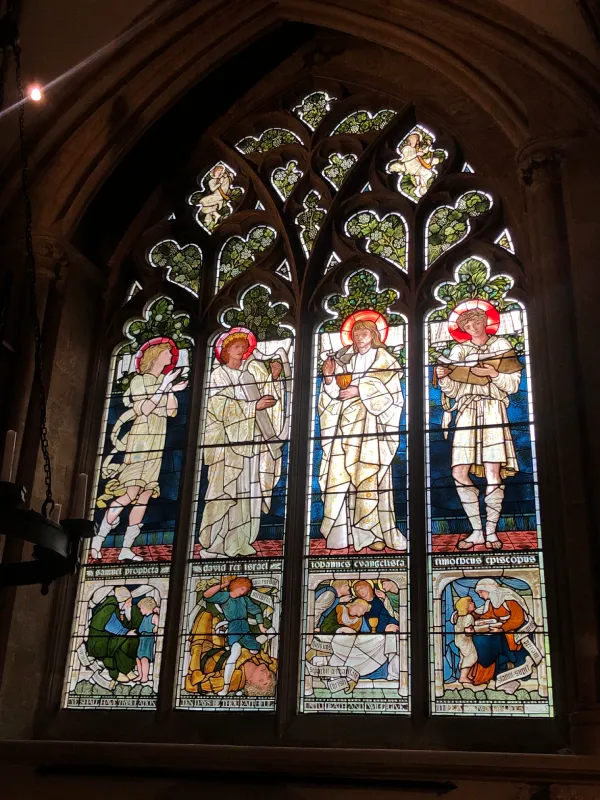
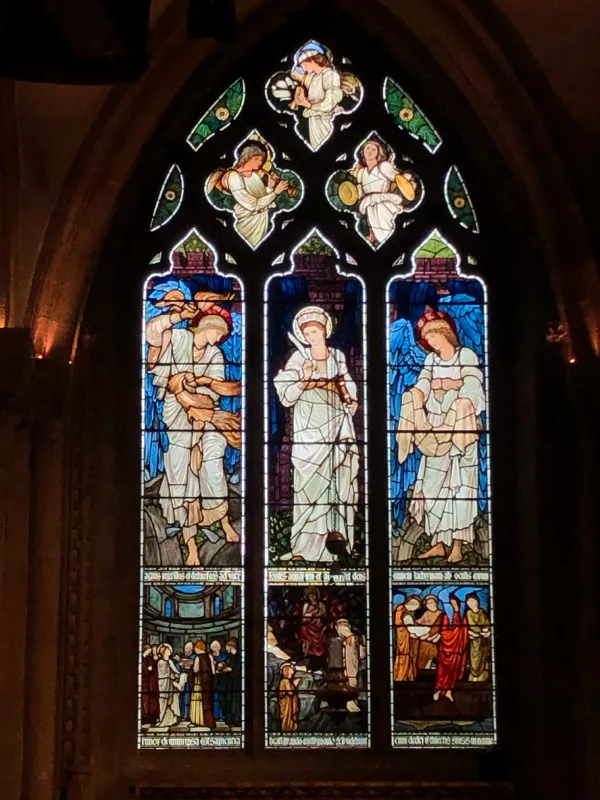
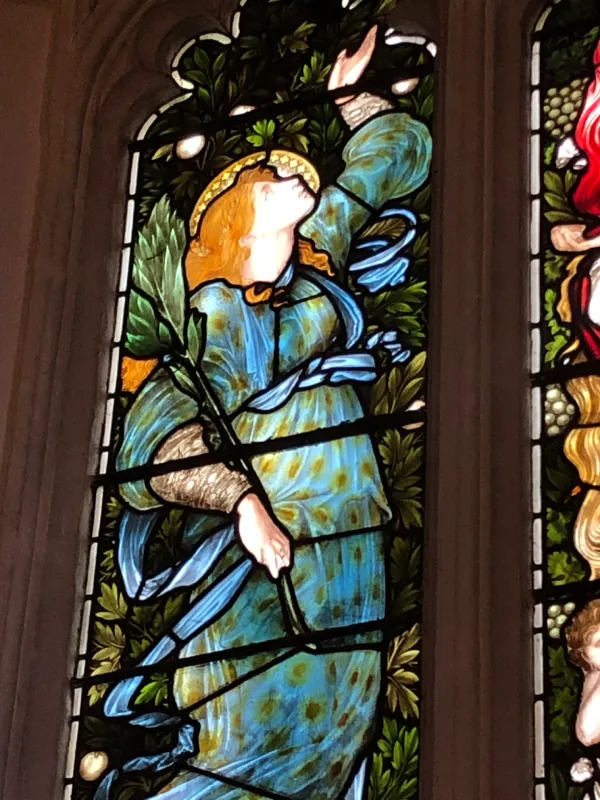
Exeter College
This is another of the older colleges at Oxford, and while exploring the city I saw a poster for a Tudor Music by Candlelight event happening the next evening. It was exploring the stories of Mary Queen of Scots and Elizabeth I, so I had to get a ticket!
The event really was magical. From their website: “‘Game of Queens: Machiavellian Machinations & Survival Strategies’ is an enthralling narrative of Mary Queen of Scots, Elizabeth I and Catherine de’ Medici which includes assassinations, poison, the occult, religious wars and massacres, and (in Catherine’s own words) ‘passion, hatred, and vengeance’, and is illustrated with music (by Attaignant, Arbeau, Bataille, Caccini, Dowland, Guedron, Strozzi), readings from contemporary correspondence, as well as the sonnets and speeches of William Shakespeare. Performed by award-winning period ensemble Charivari Agréable: Isobel Collyer (reader & soprano), Layil Barr (recorders & bass viol), and Kah-Ming Ng (virginals).”
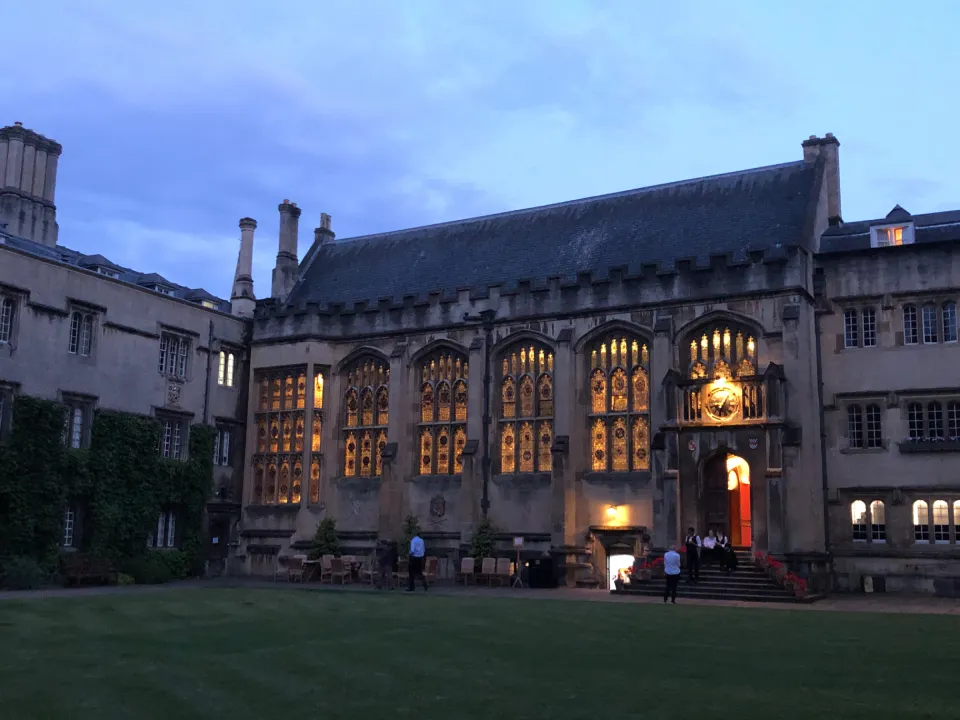
Why do I mention this here? Because the chapel contains a large tapestry by Burne-Jones, and I was lucky enough to get a seat opposite it for the show. So I sat listening to Tudor music and song, expertly performed, while looking at this beautiful piece of art (and the building as a whole!).


The Union Library
The last mention for this post is the Oxford Union Society. Again I was lucky to find someone who could get me in to the building and show me what I was hoping to see – the stunning library space, complete with murals painted by Dante Gabriel Rossetti, William Morris and Edward Burne-Jones, alongside several others.
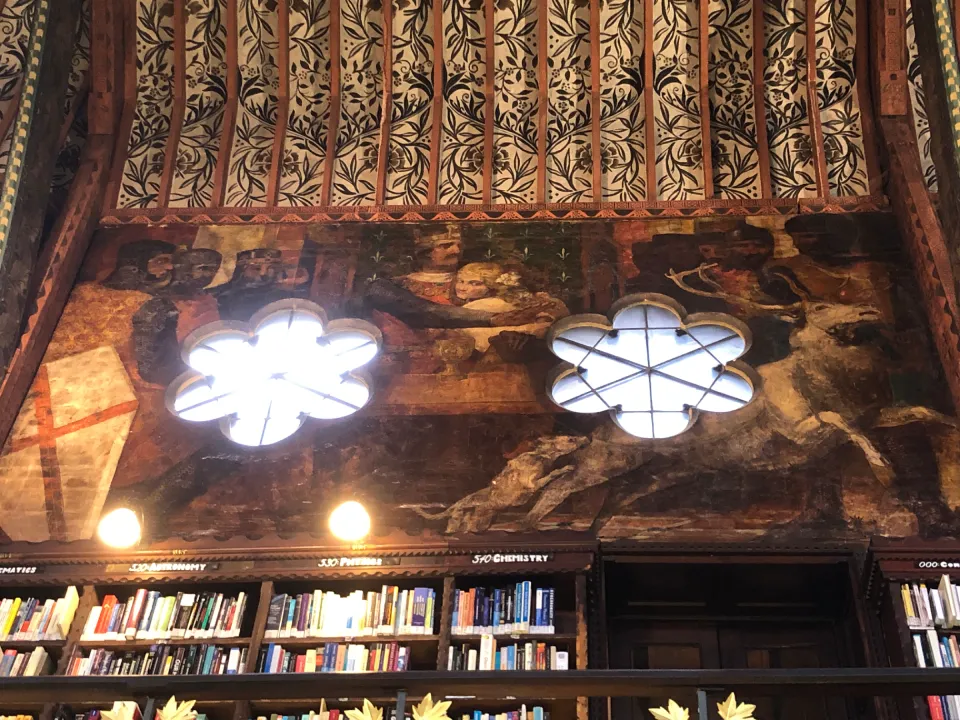

I can’t imagine them all working in the same space, painting directly on to the walls! Unfortunately the upper level was closed (for insurance reasons!) so I could only view them from the floor, but they were lovely nonetheless. Next time I will try to get in to see them at night, as this image from Flikr shows (thanks Topper the Wombat!) the paintings can be seen much more clearly without the sunlight coming in!
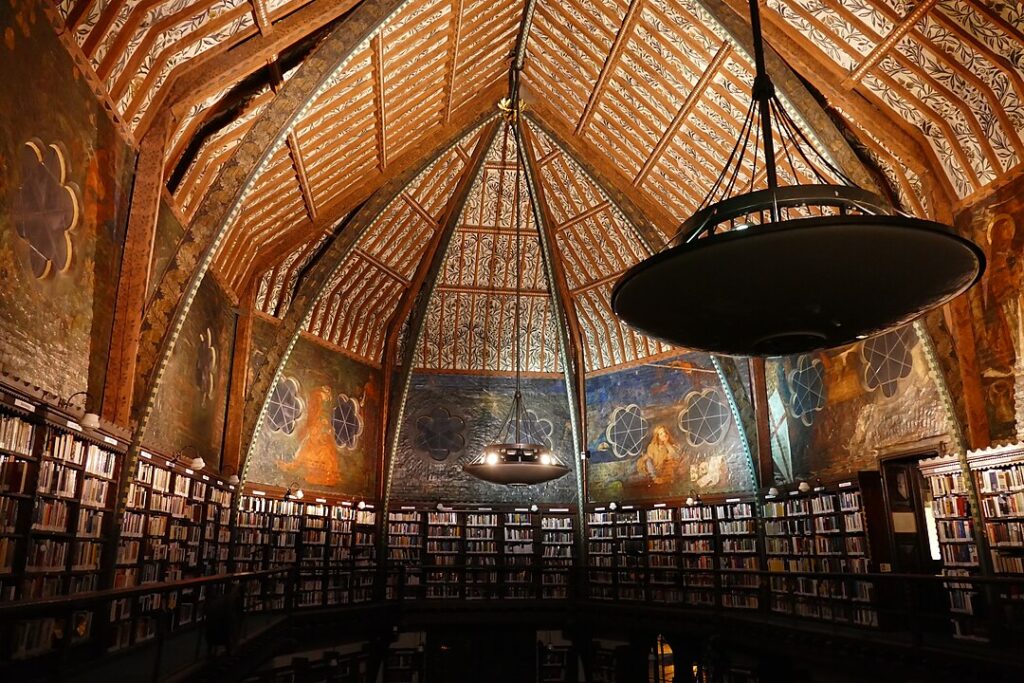
I have 2 more posts to come; one about a particular Pre-Raphaelite painting that was I really keen to find, and another about the Ashmolean Museum.
